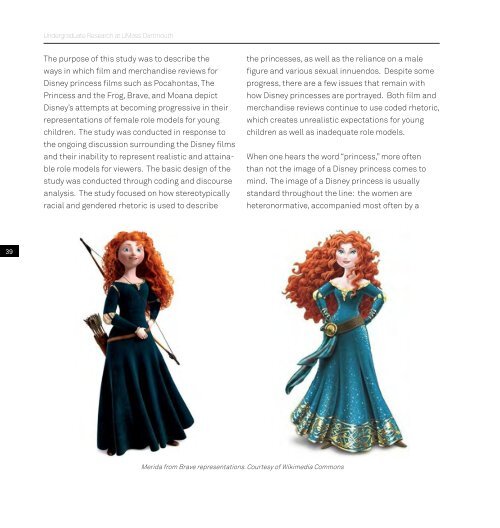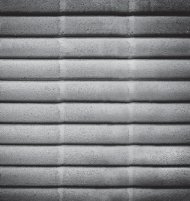Undergrad_Book_16-18_Pge_View_Print_no print marks_compressed
You also want an ePaper? Increase the reach of your titles
YUMPU automatically turns print PDFs into web optimized ePapers that Google loves.
<strong>Undergrad</strong>uate Research at UMass Dartmouth<br />
The purpose of this study was to describe the<br />
ways in which film and merchandise reviews for<br />
Disney princess films such as Pocahontas, The<br />
Princess and the Frog, Brave, and Moana depict<br />
Disney’s attempts at becoming progressive in their<br />
representations of female role models for young<br />
children. The study was conducted in response to<br />
the ongoing discussion surrounding the Disney films<br />
and their inability to represent realistic and attainable<br />
role models for viewers. The basic design of the<br />
study was conducted through coding and discourse<br />
analysis. The study focused on how stereotypically<br />
racial and gendered rhetoric is used to describe<br />
the princesses, as well as the reliance on a male<br />
figure and various sexual innuendos. Despite some<br />
progress, there are a few issues that remain with<br />
how Disney princesses are portrayed. Both film and<br />
merchandise reviews continue to use coded rhetoric,<br />
which creates unrealistic expectations for young<br />
children as well as inadequate role models.<br />
When one hears the word “princess,” more often<br />
than <strong>no</strong>t the image of a Disney princess comes to<br />
mind. The image of a Disney princess is usually<br />
standard throughout the line: the women are<br />
hetero<strong>no</strong>rmative, accompanied most often by a<br />
39<br />
Merida from Brave representations. Courtesy of Wikimedia Commons



